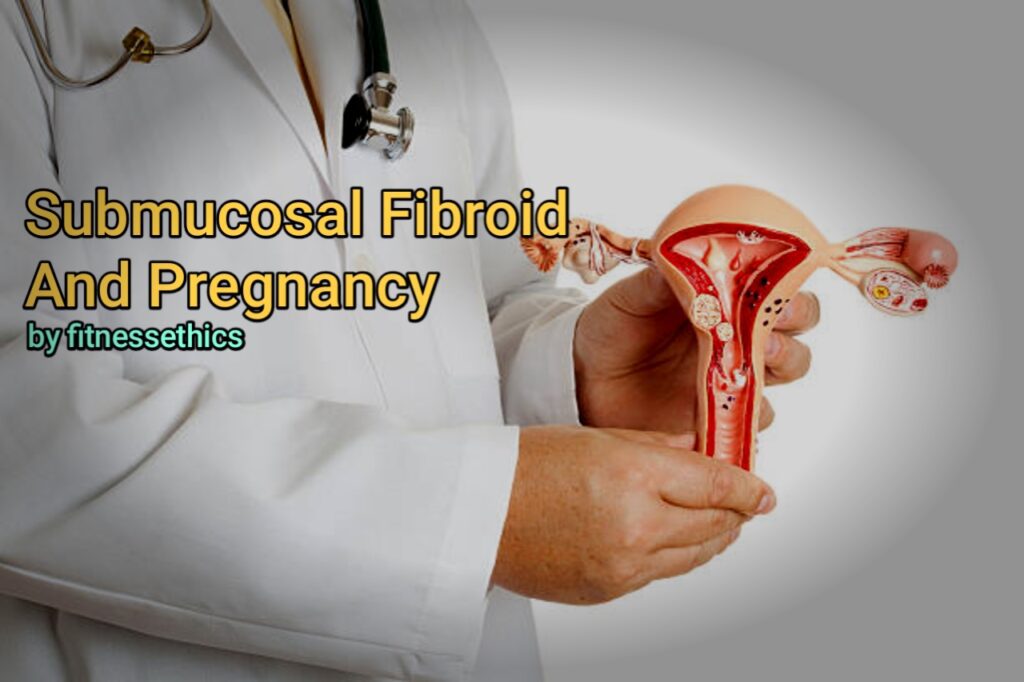Submucosal fibroids are one of the three main types of uterine fibroids. Just by knowing the location of the fibroids, doctors can identify the type of uterine fibroids. Submucosal fibroids grow into the uterus while intramural and subserosal fibroids grow within the muscle wall of the uterus and outward from the uterus into the pelvic cavity, respectively.
Submucosal Fibroid And Pregnancy
In today’s article, we’ll be discussing submucosal fibroids and pregnancy. Submucosal fibroids are directly related to pregnancy; they develop into the inner lining of the uterus and block the fallopian tubes. The fallopian tube is one of the most vital organs in the female reproductive system. With the fallopian tube blocked, fertilisation won’t be possible as the sperm cannot travel to the uterus for implantation. The fallopian tube(s) is an important passageway for an egg and a sperm to meet and for a fertilized egg (embryo) to make its way to your uterus. The health of your fallopian tubes impacts your fertility. Blocked or damaged fallopian tubes can make it difficult for individuals and couples to become pregnant.
Submucosal fibroids can lead to a blocked fallopian tube, which can cause infertility while the condition is still present. When the appropriate treatments have been made, the egg should be able to fuse with the sperm as it should. Submucosal fibroids can lead to damaged reproductive organs, which can cause infertility in turn. Submucosal fibroids can prevent the sperm from meeting the eggs, but what about when a pregnant woman has the condition? Well, it can cause serious complications during pregnancy. The fibroid tends to grow even larger and spread throughout the uterine cavity. With a submucosal fibroid already growing in the uterus, there will be insufficient room for the foetus to grow. This lack of convenience for the foetus may result in a miscarriage or various birth deformities.
Symptoms Of Submucosal Fibroid
Submucosal fibroids are not related to cancer. They are non-cancerous growths that can occur at child bearing age. Submucosal fibroids may not develop into cancer, but they can have several symptoms and complications. Symptoms of submucosal fibroids may include,
- Heavy flow
- Prolonged periods
- Severe anemia
- Frequently passing clots
- Back and pelvic pain
- Fatigue and dizziness
- Menopausal bleeding
A sudden change in the texture of your period should be closely monitored. Large blood clots in the period can be a major sign of submucosal fibroids. Fibroids impact the menstrual blood flow, with those responsible for the heaviest flow located in the endometrium, or inside layer of the uterus. Even the smallest fibroids can cause large blood clots during your period and heavy bleeding. Keep in mind that the uterus relies on two functions to stop menstruation.
How Can Submucosal Fibroid Be Treated?
Submucosal fibroids can be treated, though treatment may vary depending on how it suits the patient. Your doctor will diagnose the fibroids using a digital pelvic exam along with a traditional ultrasound and possibly an MRI if more specific information is required.
Your healthcare provider can prescribe certain medications if the fibroids haven’t gotten to an advanced stage yet. Pain medications and an increased iron intake through diet would be of great help. There are other recommended medications that can shrink fibroids and reduce the bleeding. Perhaps these treatments are not effective or the fibroids need another form of treatment because they have advanced, then these treatments can come in.
Myomectomy
A myomectomy is a surgery that removes only the fibroids and does not alter the uterus. In myomectomy, the size and location don’t matter.
Hysteroscopy
This is the examination of the uterus using a hysteroscope. In this procedure, the fibroids are diagnosed through the vagina and used if fibroids are in the uterine cavity.
Hysterectomy
This procedure is completely different from hysteroscopy. The uterus is completely removed through surgery along with all fibroids and their symptoms. This is major surgery, including anesthesia, with an extended recovery time.
[starbox]



